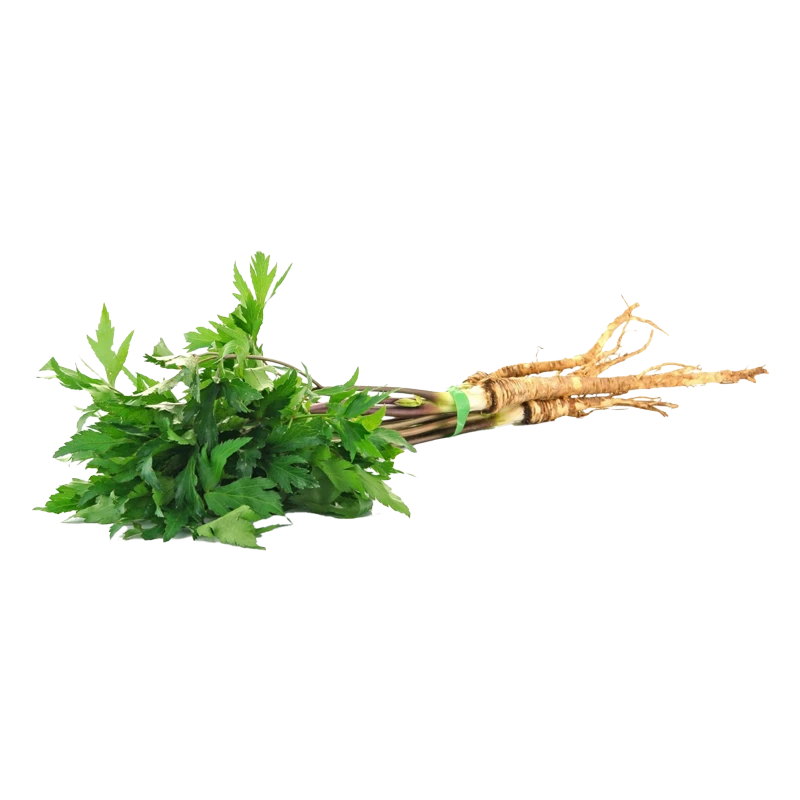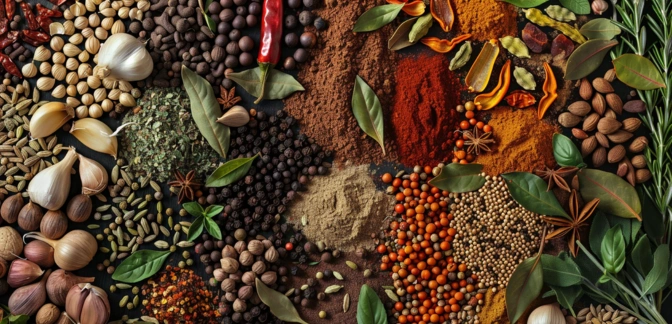Lovage — Nutrients, Health Benefits, And Shopping Tips

Written by Listonic Team
Last update on September 4, 2024
Nutrition facts
Nutrition facts
Amount per 100 g
Calories
🔥 64 kcal
| Nutrition per: 100 g | Value | % Daily Value* |
|---|---|---|
| Carbs | 13 g | 4.73% |
| Fiber | 0 g | - |
| Sugars | 0 g | - |
| Glycemic Index | 5 | - |
| Protein | 4 g | 8% |
| Sodium | 65 mg | 2.83% |
| Total Fat | 1 g | 1.28% |
*The % of Daily Value (DV) tells you how much a nutrient in a serving of food contributes to a daily diet. 2,000 calories a day is used for general nutrition advice.
5
🟢 Low Glycemic Index
1 g
🥕 Low Fat Content
Did you know?
Health benefits
- Rich in vitamins and minerals such as Vitamin C, Vitamin A, and potassium, which support immune function, skin health, and overall well-being.
- Contains antioxidants which help protect the body from free radicals and reduce inflammation.
- Supports digestive health by stimulating the production of digestive enzymes and reducing symptoms of indigestion and bloating.
- Has diuretic properties, which can help reduce water retention and support kidney health.
Health risks
- Potential for allergic reactions in some individuals, particularly those allergic to plants in the Apiaceae family, causing symptoms like itching, swelling, or difficulty breathing.
- Risk of digestive discomfort such as gas or bloating when consumed in large quantities, particularly in those sensitive to high-fiber foods.
- Potential for interactions with medications particularly diuretics or blood thinners, as lovage may have diuretic and mild anticoagulant effects.
- Potential for contamination with pesticides or harmful bacteria if not properly washed or sourced from a reputable supplier.
How to choose lovage
Lovage leaves should be vibrant green, with a clean, celery-like aroma that is slightly sharp and earthy. The leaves should be crisp, not wilted or browned, ensuring they are fresh and potent.
Pass over lovage that has limp, discolored leaves, as this suggests the herb is past its prime. Fresh lovage should enhance dishes with its bold, unique flavor, similar to celery but with a deeper, more intense taste.

How to store lovage
Fresh lovage can be stored in the refrigerator, wrapped in a damp paper towel, and placed inside a plastic bag. Refrigeration helps maintain its freshness for up to a week. Alternatively, lovage can be dried and stored in an airtight container.
Do not leave fresh lovage at room temperature for extended periods, as it will wilt and lose its flavor. Avoid washing lovage before storage as excess moisture can lead to mold. Wash and prepare just before use to ensure the best quality.
✅ Extra Tip
How long does it last?
Lovage can last for 1-2 weeks in the refrigerator when stored in a plastic bag with a paper towel to absorb excess moisture. For longer storage, lovage can be dried and kept for up to 6 months in an airtight container.
What to do with leftovers?
Leftover lovage can be used in a variety of culinary and non-culinary ways. In the kitchen, lovage adds a celery-like flavor to dishes such as soups, stews, salads, and sauces. Its leaves, seeds, and stems can be used fresh or dried to enhance the flavor of broths or as a seasoning for roasted vegetables and meats.
Beyond cooking, lovage has several traditional uses. It can be brewed into a tea, which is believed to help aid digestion and relieve bloating. Lovage can also be used in homemade herbal remedies, such as making a poultice to soothe insect bites or minor skin irritations. Additionally, lovage can be used in gardening as a companion plant; its strong scent can help repel pests, while attracting beneficial insects like pollinators. Lovage can also be added to homemade potpourri for a fresh, herbal scent in the home.
👨⚕️️ Medical disclaimer
Discover products from other categories
Listonic Team
Fact-checked
Our editorial team checked this article to make sure it was accurate at the time of publishing it.
Get the top-rated shopping list app on your phone!







